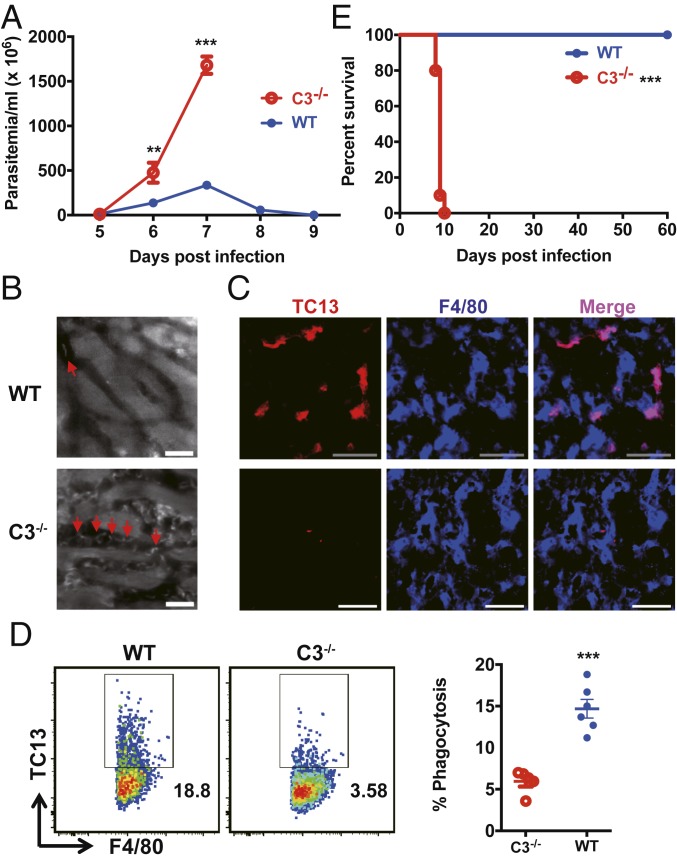Fig. 2.
Complement C3 mediates parasite capture by KCs, preventing the early mortality of mice during T. congolense infection. (A) Parasitemia of WT and C3−/− mice (n = 5 per group) i.p. infected with 1 × 103 T. congolense. (B) Representative IVM images showing the parasites (arrows) in the liver sinusoids of WT and C3−/− mice 7 d after i.p. infection with 1 × 103 T. congolense. The parasites in the sinusoids were labeled by i.v. administration of rhodamine 6G 10 min prior to imaging. (Scale bars, 20 µm.) (C) Representative images of immunohistological staining showing parasite TC13 antigens (red) in KCs (blue, labeled by anti-F4/80 mAb) of WT and C3−/− mice 7 d post i.p. infection with 1 × 103 T. congolense. (Scale bars, 50 µm.) (D) WT and C3−/− mice (n = 5–6 per group) were i.p. infected with 1 × 103 T. congolense; flow cytometry was performed to detect the capture of the parasites by KCs (labeled by anti-F4/80 mAb) in the liver. (Left) Representative dot plots. (Right) Quantification. (E) The survival of WT and C3−/− mice (n = 10 per group) after i.p. infection with 1 × 103 T. congolense. Data are expressed as mean ± SEM of 2 independent experiments. **P < 0.01, ***P < 0.001 by Student’s t test or log-rank test.

